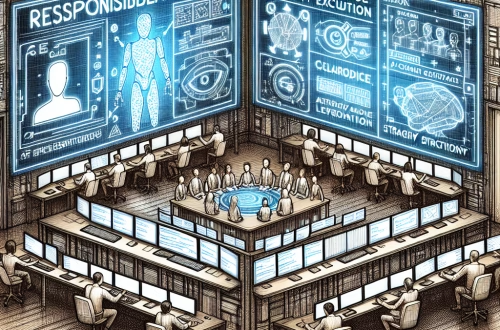ChatGPT to Rephrase Complex Definitions
Summary:
ChatGPT is an AI language model developed by OpenAI, designed to generate human-like text based on user inputs. One of its most practical applications is rephrasing complex definitions into simpler terms, making technical jargon accessible to non-experts. This capability is especially valuable for novices in the AI industry, who may struggle with dense terminology. By leveraging ChatGPT, users can accelerate learning, improve communication, and bridge knowledge gaps. Its versatility and ease of use position it as an essential tool for democratizing technical knowledge.
What This Means for You:
- Simplified Learning: ChatGPT can transform intimidating technical terms into plain language, helping you grasp foundational AI concepts faster. For example, inputting a definition like “convolutional neural networks” can yield explanations using analogies like “layers that analyze visual data step-by-step.”
- Enhanced Productivity: Use ChatGPT to draft clearer documentation or training materials. Actionable advice: Feed the model technical paragraphs and ask, “Explain this for a beginner,” to create audience-specific content efficiently.
- Professional Communication: Rephrase complex ideas for clients or stakeholders unfamiliar with AI. Actionable tip: Before presentations, use prompts like “Rewrite this definition for a business audience” to ensure clarity.
- Future Outlook or Warning: While ChatGPT excels at simplification, over-reliance without cross-verification can lead to misunderstandings. Always verify critical information against trusted sources, as the model may oversimplify nuances or generate plausible-sounding inaccuracies.
Explained: ChatGPT to Rephrase Complex Definitions
What Is ChatGPT?
ChatGPT is a transformer-based language model trained on vast datasets, enabling it to predict and generate text sequences. Its ability to rephrase stems from understanding context and semantic relationships, allowing it to restructure sentences while preserving meaning.
How Does Rephrasing Work?
The model uses attention mechanisms to identify key terms in complex definitions. For instance, when asked to simplify “quantum computing leverages superposition for parallel processing,” ChatGPT might output, “Quantum computers use special properties to perform multiple calculations at once.” It prioritizes readability through shorter sentences, analogies, and layman’s vocabulary.
Best Use Cases
Learning & Training: Ideal for students or new professionals decoding technical papers.
Content Creation: Repurpose academic content into blog posts or social media snippets.
Cross-Disciplinary Collaboration: Helps engineers communicate with marketers or legal teams by “translating” domain-specific terms.
Strengths
- Speed: Generates alternatives in seconds.
- Scalability: Processes large volumes of text consistently.
- Customization: Responds to prompts like “Explain like I’m 10” or “Use engineering examples.”
Weaknesses & Limitations
- Loss of Precision: May omit critical nuances (e.g., oversimplifying “blockchain consensus mechanisms” as “agreement rules”).
- Context Errors: Struggles with highly niche terms (e.g., “heteroscedasticity in econometrics”) without additional examples.
- Bias Risk: Reflects biases in training data, occasionally producing incorrect or culturally insensitive phrasing.
Best Practices for Optimal Results
- Provide context (e.g., “Rephrase this medical definition for high-school students”).
- Use iterative refinement: Ask follow-ups like “Make this even simpler.”
- Compare outputs with original definitions to ensure accuracy.
People Also Ask About:
- Can ChatGPT rephrase complex definitions accurately?
While ChatGPT often delivers readable simplifications, accuracy depends on the term’s complexity and provided context. Cross-referencing with authoritative sources is recommended for mission-critical applications. - What types of definitions work best for ChatGPT rephrasing?
Broadly known concepts (e.g., “machine learning”) yield better results than hyper-specialized terms (e.g., “adversarial robustness in federated learning”). Providing examples improves outcomes. - How does ChatGPT compare to human editing for simplification?
ChatGPT is faster and cheaper but lacks human intuition for audience-specific tailoring. For high-stakes content, combine AI drafts with expert review. - Can I customize ChatGPT’s rephrasing style?
Yes. Use prompts like “Use active voice” or “Avoid metaphors” to guide tone. Advanced users can fine-tune the model via API for industry-specific phrasing.
Expert Opinion:
ChatGPT’s rephrasing capabilities offer transformative potential for knowledge dissemination, but users must remain vigilant about factual accuracy. Models may inherit biases or generate persuasive yet incorrect simplifications. Future iterations will likely improve contextual understanding, yet ethical use requires transparency about AI assistance. Novices should treat outputs as starting points for deeper research, not definitive explanations.
Extra Information:
- OpenAI’s ChatGPT Guide: Details model capabilities and best practices for prompt engineering.
- GPT-3 Research Paper: Explores technical foundations affecting rephrasing accuracy and limitations.
- Australian Government Style Manual: A reference for clear communication principles applicable to AI-assisted writing.
Related Key Terms:
- AI tools to simplify technical jargon for beginners
- How ChatGPT rephrases academic definitions
- Best prompts to simplify AI terms with ChatGPT
- ChatGPT for technical communication training
- Limitations of AI in rephrasing specialized terminology
Check out our AI Model Comparison Tool here: AI Model Comparison Tool
#ChatGPT #rephrase #complex #definitions
*Featured image provided by Pixabay





